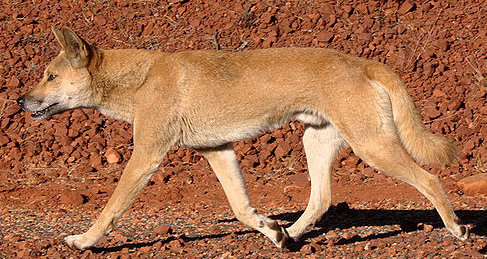Wild Dogs of Australia
Genesis 1:25
“And God made the beast of the earth after his kind, and cattle after their kind, and every thing that creepeth upon the earth after his kind: and God saw that it was good.”
 Most mammals in Australia are marsupials. That is one of the things that makes Australia so special to those of us elsewhere in the world who may never have been there. Think of Australia, and most of us think of kangaroos, koalas, and wombats. Placentals, like rats and rabbits, are normally pests, introduced in colonial times.
Most mammals in Australia are marsupials. That is one of the things that makes Australia so special to those of us elsewhere in the world who may never have been there. Think of Australia, and most of us think of kangaroos, koalas, and wombats. Placentals, like rats and rabbits, are normally pests, introduced in colonial times.
Yet, there is one placental mammal that is associated with Australia, as a typical wild animal. That is the wild dog known as the dingo. Dingoes are widespread across the continent. There are not many competitors to the dingo, as carnivores. Dingoes can, therefore, be a problem for livestock but are also considered useful in their depredation on rabbits.
It appears genetically that dingoes contain the mDNA haplotype A29. MDNA refers to mitochondrial DNA, always inherited from the mother, while a haplotype indicates a group of genes inherited from a single parent. Therefore, it can be assumed that all dingoes are descended from a single female. Of course, we know that, biblically, this will apply to all kinds of animals, but in the case of dingoes, this would appear to be a good deal more recent, generationally, than the animals which emerged from the Ark. This first dingo probably came from SE Asia, and was likely brought to Australia with human migration because the same haplotype is found in 70% of domestic dogs.
This makes dingoes a case study in miniature of how populations of animals could quickly migrate and establish their place in eco-systems after the Flood.
We are amazed at the wide variety of flora and fauna that You have placed in this world, Lord. We are grateful and thankful for Your abundant creativity. Amen.
Author: Paul F. Taylor
Ref: Encyclopaedia Britannica, , accessed 10/31/2017. Image: Creative Commons Attribution 2.0 Generic.